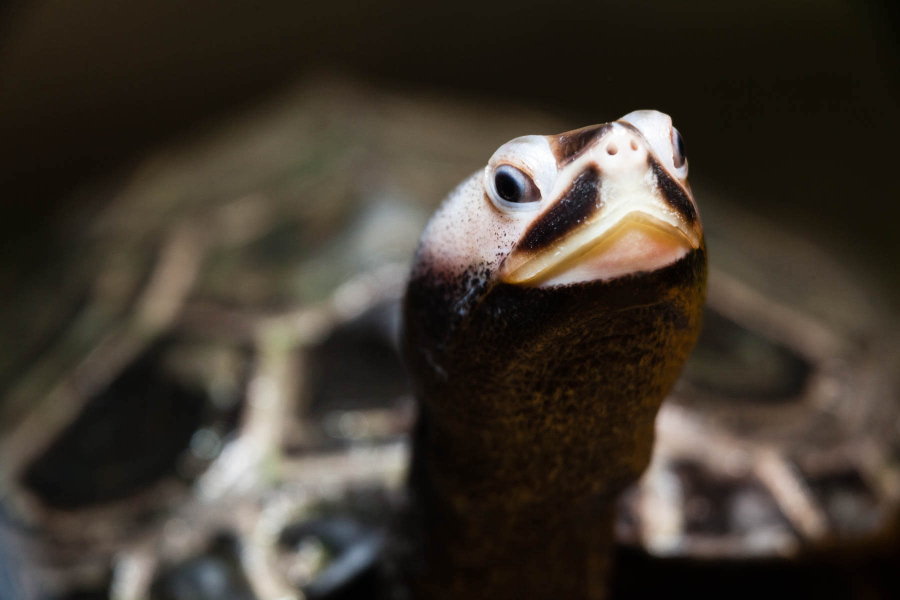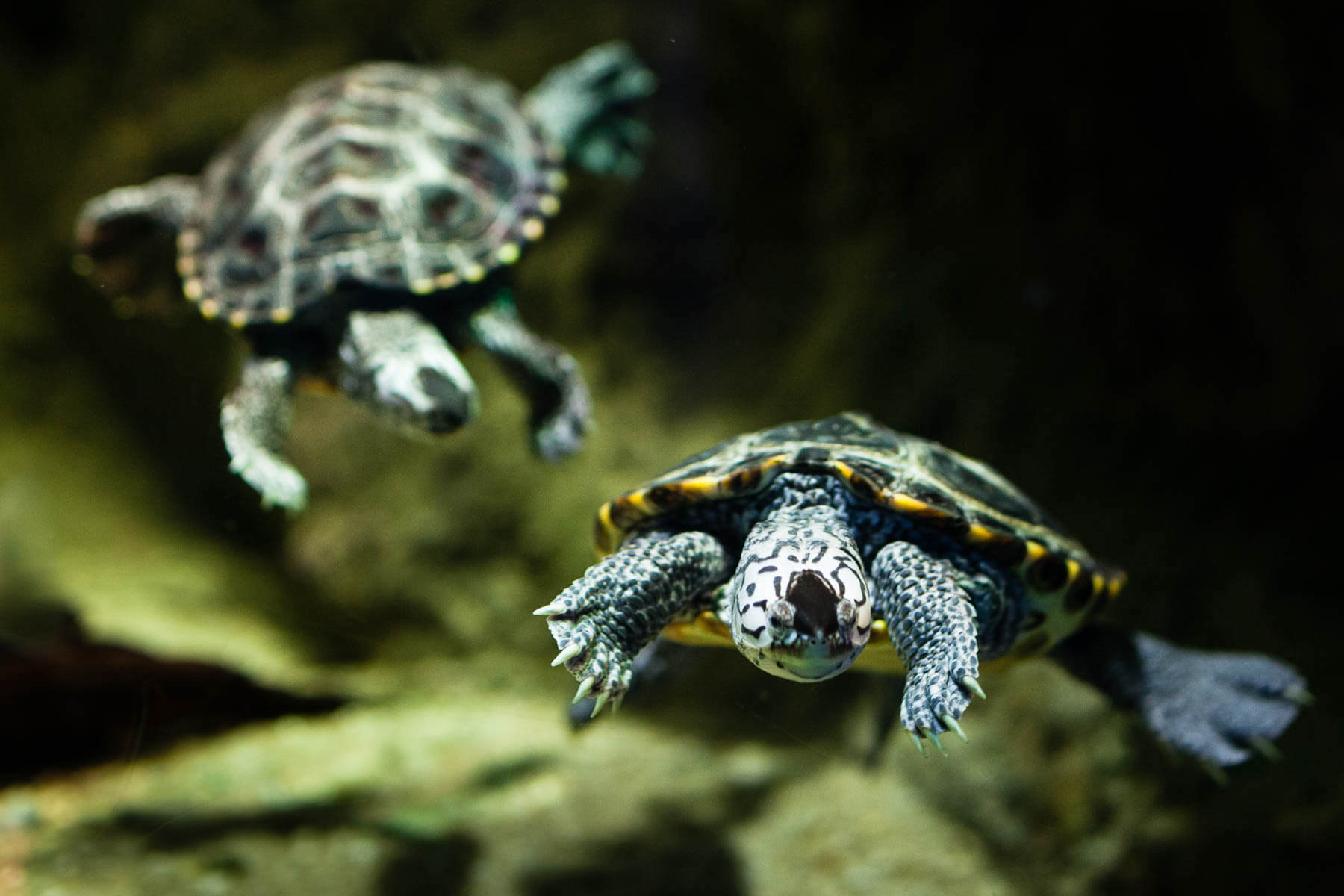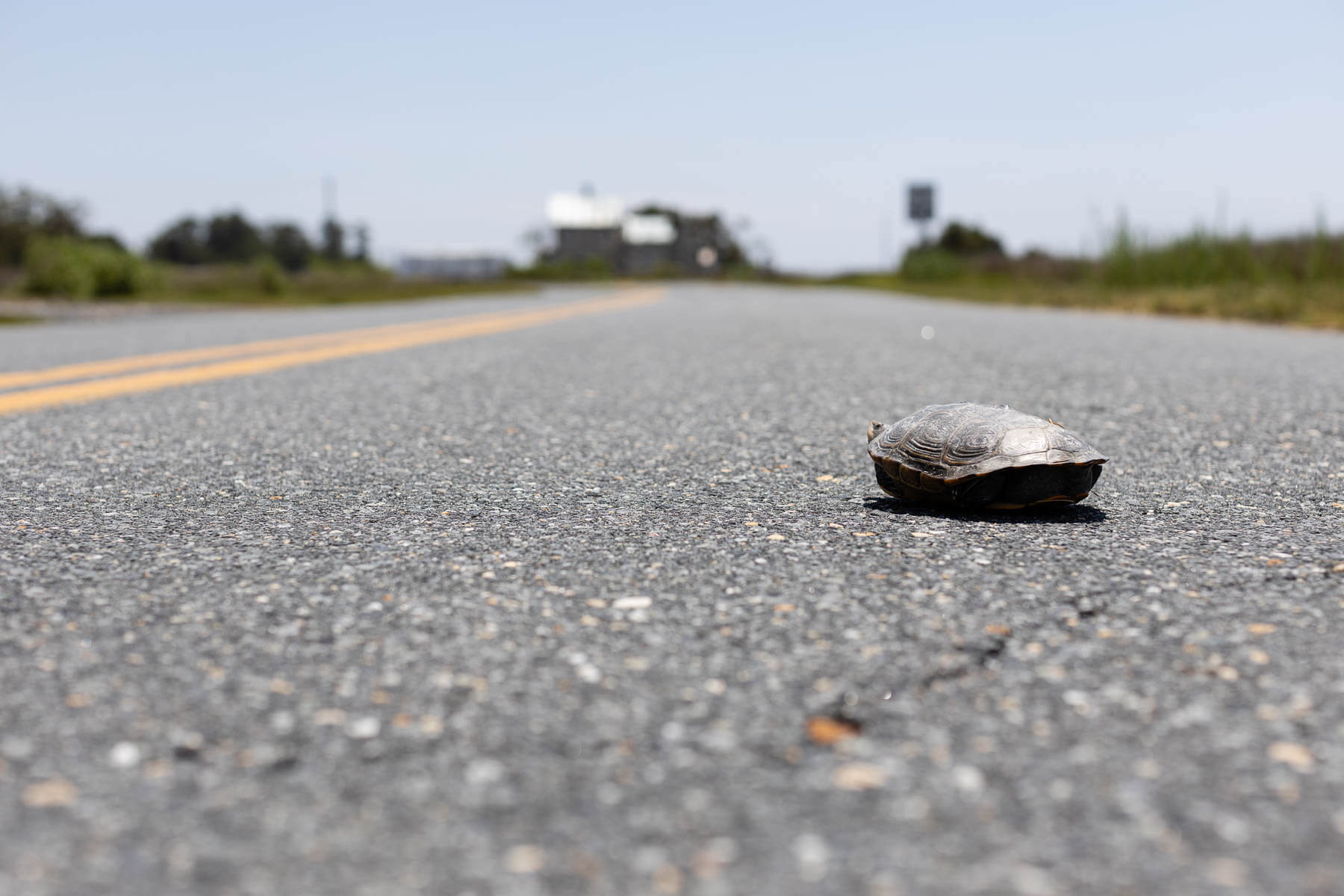Showing love for Maryland’s favorite reptile

The diamondback terrapin can be found on both the east and gulf coasts of the United States, but it has enjoyed the status of Maryland’s state reptile for decades. As the mascot for the University of Maryland, “Testudo” the terrapin shows up on t-shirts, jerseys and basketball courts, and is enshrined around campus in a few different statues. It’s clear that Marylanders love the diamondback terrapin, but the marshes and mud in Maryland, and elsewhere in the watershed, need help if they are to continue serving as a suitable habitat.
Hometown reptiles
Turtles are reptiles, and reptiles are uniquely tied to the temperature of their environment. While mammals can regulate their own temperatures through internal factors, reptiles cannot. Instead, they use their environment: they take a dip in cool water, bask in the sun or retreat to the shade as needed. We commonly call creatures that do this “cold-blooded”, but their blood isn’t cold. The proper term is ectothermic (ecto meaning “outside” and thermo meaning “heat/hot”) animals, because they can’t warm or cool their blood from within.
While turtles may move around a great deal as they adjust temperature, they don’t move very far. Turtles have small home territories, which is why it’s difficult to conserve and protect their habitat on a massive scale. If you have a turtle living in your area, then any change you make to those couple of acres or on that one block matters greatly. Your own small backyard could be a critical piece of that turtle’s lifetime habitat. In fact, terrapins are so closely tied to their native range that location is the main factor in identifying the seven subspecies of diamondbacks.

Threats to the diamondback
While turtles largely live in fresh water and tortoises live on land, terrapins occupy that niche of habitat that makes estuaries such unique locations: brackish water and surrounding wetlands. Diamondbacks swim in water, lay their eggs on sandy beaches and feast on fish, snails and mussels who live in brackish water and wetland areas. As an intimate part of their environment, terrapins also help the habitat thrive: without them, snails could overgraze on marsh grasses and accelerate erosion.
But while diamondbacks have a unique and intimate relationship with their habitat, they are vulnerable to a wide variety of natural and man-made threats.
Though accomplished swimmers that can remain below water for up to four hours, diamondbacks do not have gills like fish, and instead pop their head above water and use their nose to breathe. Because they must eventually come up to the surface, terrapins in search of an enticing crustacean meal can unintentionally drown when they become trapped in crab pots. As a carnivore who dives into the water for some of its meals, the diamondback terrapin is especially vulnerable to these types of drowning hazards.
Diamondback females are much larger than males so that they can carry the eggs of the future generation. Rather than drowning in pots, females are more likely to be hit by cars when trying to cross the road to reach their sandy nesting sites. If you ever see a determined turtle trying to cross the road, gently carry them across in the direction they were headed.

In addition to behavioral dangers like drownings and car accidents, the sandy beaches that diamondbacks need for nesting are becoming rarer. Luckily, many jurisdictions in the Chesapeake Bay watershed are working to conserve wetland habitat because of the role they play in mitigating the impact of severe storms, but those same wetlands are also vulnerable to development and climate change.
Since terrapins need a brackish habitat, which are around the saltier waterways of the Bay, humans can enjoy the privilege of seeing diamondbacks out in the wild. With 11,684 miles of shoreline in the Bay and its tidal tributaries (more than the entire west coast of the United States), the Chesapeake is the perfect place to catch a glimpse of this iconic creature.
You can learn more about the variety of reptiles and amphibians that call the Chesapeake Bay watershed home on our Field Guide.

Comments
Join MATTS, the Mid Atlantic Turtle and Tortoise Society, a 501(c)3 non-profit, to help save the Terps !
https://www.matts-turtles.org/
Thank you!
Your comment has been received. Before it can be published, the comment will be reviewed by our team to ensure it adheres with our rules of engagement.
Back to recent stories